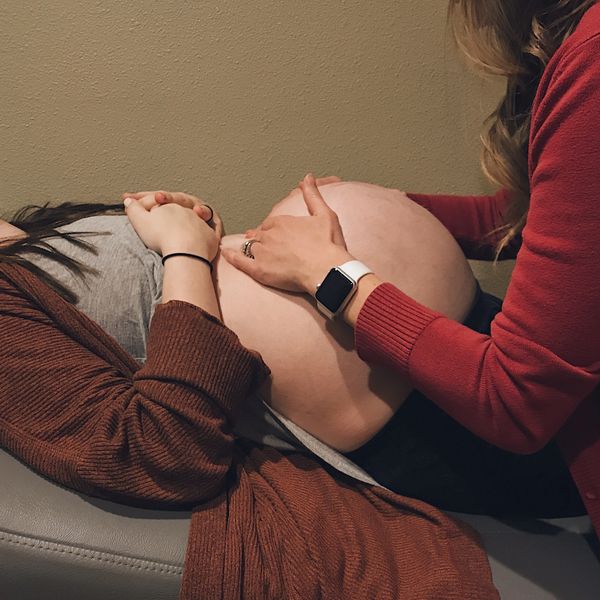Photo Gallery




Let's Connect!
Sign up to hear from us about specials, sales, and events.
Hello
I'm Julie Lynn. Ph.D., LM, CPM
I have been involved in homebirth since 2006 when I moved to SC to start my homebirth education journey. I attended an education program in Greenville, SC, and graduated in 2008 from the SC School of Midwifery. I started my apprenticeship with Covent Birth Center, where I learned so many valuable skills from my preceptors, Lisa and Alex. I finished my NARM requirements at a busy birth center in El Paso called CASA. During my time at CASA, I stepped into my own style of practice, which continues today.
I started my solo practice in Hanover, P.A., in 2014. I've attended around 700-800 births since I started my education and during my work on a labor and delivery unit. Every birth is unique and special in its own way. I love to witness the strength of a birthing mama as she becomes a mother, whether it's her first child or her eighth.
I offer a more individualized experience because I love the personal connection, I develop with my clients during our time together. I keep my on-call schedule light, usually 3-4 clients a month, so each client receives personal care from my assistant and me. Another critical focus is collaborative care; my clients are equal partners in decision-making and their care plan, so their care is tailored to their needs. The biggest perk to working with us is that we offer the same standard of care found in an OB office compassionately delivered in the comfort of your home.
I'm passionate about homebirth and keeping midwifery care available for the community. I know the best environment for a woman to labor and give birth is in a familiar, stress-free environment of her own home. Dr. Michel Odent states, "What every mammal needs for a safe labor and birth is: DARKNESS, SOLITUDE, WARMTH, and QUIET." This is the passion behind TLC FOR MOMS 2 B.
We look forward to being a part of your special day and serving you in your homebirth journey! If you think we are a good fit, please call to schedule a meet and greet!
My education:
I have a Ph.D. in Integrative Medicine, a master's in public health, and a bachelor's degree in the Science of Nutrition Science.
My Certifications:
Certified Nutrition Wellness Consultant, Certified Health Education Specialist, Integrative Functional Nutrition Certified Practitioner, and Certified Professional Midwife.
I am currently working on a Ph.D. in public health. I am in the perspectives phase of the dissertation. I plan to evaluate the effects of a gluten-free plant-based diet on chronic pain for non-celiac participants. I am fascinated by how diet impacts our health and wellness, especially when it comes to chronic disease and chronic pain.
TLC FOR MOMS 2 B has moved to Charleston SC and now serving Charleston, North Charleston, Goose Creek, Mount Pleasent, Beaufort and all areas in between. We are excited to be a part of the Charleston, SC homebirth family.
Hi Mamas!
I'm Clare, assistant to the Midwife.
Clare is a birth and postpartum doula, childbirth educator, community herbalist, student midwife, and toddler mom who helps clients focus on nature and nourishment as they move through their pregnancy, labor, and postpartum. She uses her undergraduate degree in psychology and her doctoral degree in health education to support new families in understanding the mental, emotional, physical, and spiritual changes that take place during the transformative experiences of pregnancy, birth, and postpartum. She has studied, taught, and researched health, sexuality,
and nutrition education for upwards of ten years, and has supported families as a birth and postpartum doula for the last three years. She worked as a midwife assistant for another Lowcountry midwife for one year and has just begun midwifery school at the Midwifery College of Utah in May 2023 with the goal of being licensed as a Certified Professional Midwife (CPM).
She also dove into herbalism studies during her pregnancy as a way to raise her child with a strong relationship to and understanding of nature, and has continued her formal and informal coursework in herbs and botanical medicine since then. As a doula, midwife assistant, and lover of herbs and plants, Clare works to find the very delicate balance of empowering the individual to understand, love, and care for their bodies and whole selves, while paying special attention to the very real role that the systems we live in play in our relationship to our health.
What Our Clients Are Saying

We loved working with Julie!
Have Questions?
Better yet, see us in person!
TLC FOR MOMS 2 B, LLC
845 Savannah Highway, # 1-B Charleston, South Carolina 29407, United States
Schedule a consult now!
Call Julie Lynn for more information
(717) 698-8524
This website uses cookies.
We use cookies to analyze website traffic and optimize your website experience. By accepting our use of cookies, your data will be aggregated with all other user data.